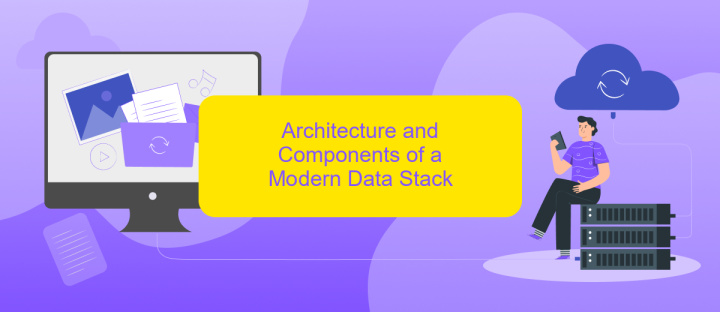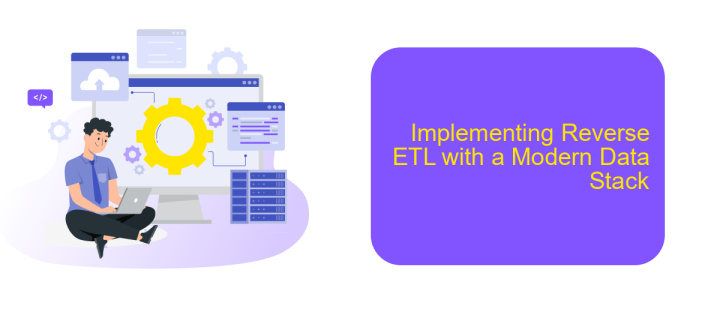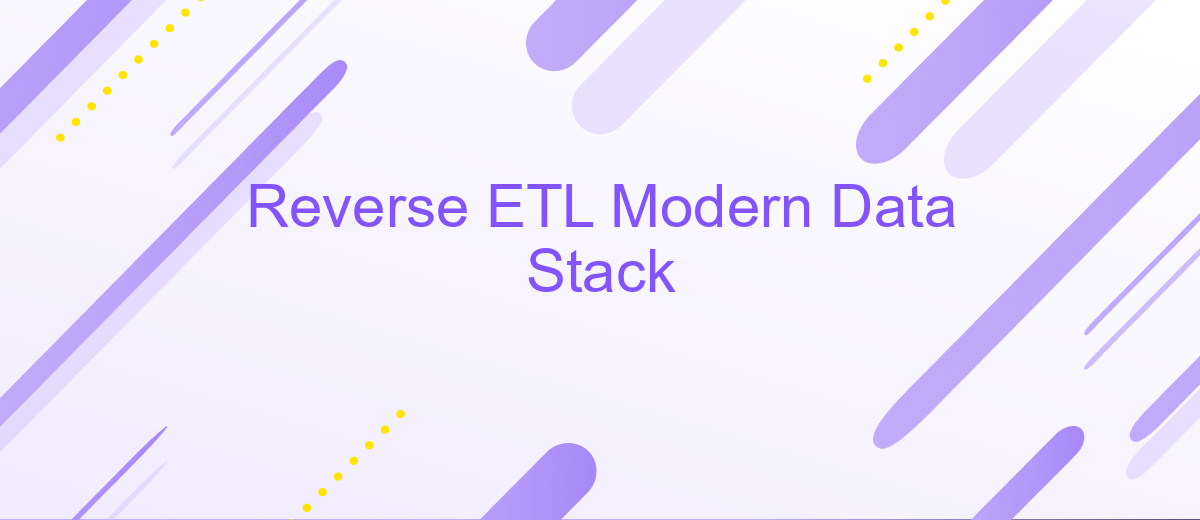Reverse ETL Modern Data Stack
Reverse ETL is revolutionizing the modern data stack by enabling businesses to extract valuable insights from their data warehouses and operationalize them across various business tools. This process bridges the gap between data storage and actionable intelligence, ensuring that data-driven decisions are seamlessly integrated into everyday operations. Discover how Reverse ETL transforms data management and drives efficiency in contemporary enterprises.
Introduction to Reverse ETL
Reverse ETL is a modern data integration process that enables businesses to extract data from their data warehouses and push it back into operational tools like CRM, marketing platforms, and other SaaS applications. This approach allows companies to leverage their centralized data for operational purposes, improving decision-making and operational efficiency.
- Enables synchronization of data across multiple platforms
- Improves data accessibility for non-technical users
- Facilitates real-time data updates in operational tools
- Enhances the overall data-driven decision-making process
One of the key services that facilitate the setup of Reverse ETL integrations is ApiX-Drive. ApiX-Drive allows businesses to seamlessly connect their data warehouses with various operational tools, ensuring that data flows smoothly and efficiently. By using such services, companies can automate data synchronization, reduce manual efforts, and ensure that their teams have access to the most up-to-date information available.
Benefits and Use Cases of Reverse ETL

Reverse ETL offers numerous benefits, including enhanced data accessibility and operational efficiency. By enabling data flow from data warehouses back into business applications, companies can ensure that their teams have access to the most up-to-date information. This streamlined data distribution helps in making informed decisions, improving customer experiences, and optimizing marketing strategies. Additionally, the automation of data synchronization reduces manual efforts and the risk of errors, leading to more reliable and consistent data across platforms.
Common use cases for Reverse ETL include customer relationship management (CRM), marketing automation, and sales operations. For instance, integrating data from a central warehouse into a CRM system can provide sales teams with valuable insights, such as customer purchase history and interaction data. Tools like ApiX-Drive simplify these integrations by allowing seamless data transfer between various applications without the need for extensive coding. This makes it easier for businesses to leverage their data assets, improve operational workflows, and ultimately drive growth.
Architecture and Components of a Modern Data Stack

The architecture of a modern data stack is designed to streamline data integration, processing, and analysis, ensuring data is readily available for decision-making. It consists of several key components that work in harmony to achieve this goal.
- Data Ingestion: Tools like Apache Kafka or AWS Kinesis collect data from various sources, ensuring real-time data flow into the system.
- Data Storage: Data lakes and warehouses such as Amazon S3 and Snowflake store vast amounts of structured and unstructured data efficiently.
- Data Transformation: ETL/ELT tools like dbt (Data Build Tool) transform raw data into meaningful insights, preparing it for analysis.
- Data Integration: Services like ApiX-Drive facilitate seamless integration between different applications, ensuring a cohesive data ecosystem.
- Data Visualization: BI tools such as Looker or Tableau help in creating interactive dashboards and reports for data-driven decision-making.
By leveraging these components, organizations can create a robust and scalable data infrastructure. Each element plays a critical role in ensuring that data is accurate, accessible, and actionable, thereby driving business growth and innovation.
Implementing Reverse ETL with a Modern Data Stack

Implementing Reverse ETL with a modern data stack involves extracting data from a data warehouse and syncing it back to operational systems. This process enables businesses to leverage their data for real-time decision-making and personalized customer experiences. The modern data stack typically includes tools for data integration, transformation, and orchestration.
To begin, you need to select the right tools that align with your existing infrastructure. These tools should offer seamless integration capabilities, robust data transformation features, and automated workflows. One such tool is ApiX-Drive, which simplifies the integration process by connecting various data sources and operational systems without requiring extensive coding skills.
- Choose a data integration tool like ApiX-Drive for seamless connectivity.
- Set up data transformation processes to ensure data consistency and accuracy.
- Automate data workflows to keep data updated in real-time.
- Monitor and maintain the system to ensure ongoing efficiency and reliability.
By leveraging a modern data stack and tools like ApiX-Drive, businesses can efficiently implement Reverse ETL processes. This not only enhances data accessibility but also empowers teams to make data-driven decisions and improve overall operational efficiency.
- Automate the work of an online store or landing
- Empower through integration
- Don't spend money on programmers and integrators
- Save time by automating routine tasks
Best Practices and Considerations for Reverse ETL
When implementing Reverse ETL, it's crucial to ensure data quality and consistency. Establishing robust data validation processes helps prevent errors and discrepancies as data moves from your data warehouse to operational systems. Regularly monitoring and auditing data flows can also help identify and resolve issues promptly, maintaining the integrity of your data.
Another key consideration is selecting the right tools and platforms for seamless integration. Services like ApiX-Drive can facilitate the process by automating data transfers between systems, reducing manual effort and minimizing the risk of errors. Additionally, prioritize security and compliance by ensuring that data transfers adhere to industry standards and regulations, safeguarding sensitive information throughout the Reverse ETL process.
FAQ
What is Reverse ETL in the context of a modern data stack?
Why is Reverse ETL important for businesses?
What are the common use cases for Reverse ETL?
How can businesses automate the Reverse ETL process?
What challenges might businesses face when implementing Reverse ETL?
Routine tasks take a lot of time from employees? Do they burn out, do not have enough working day for the main duties and important things? Do you understand that the only way out of this situation in modern realities is automation? Try Apix-Drive for free and make sure that the online connector in 5 minutes of setting up integration will remove a significant part of the routine from your life and free up time for you and your employees.


